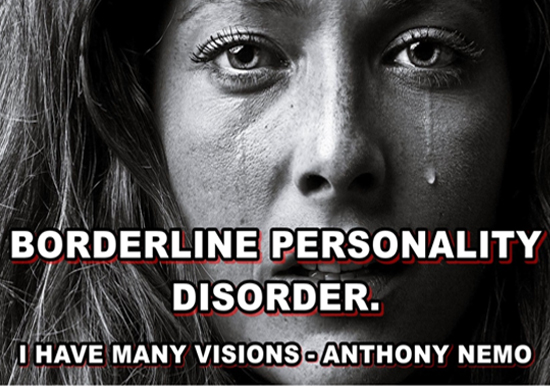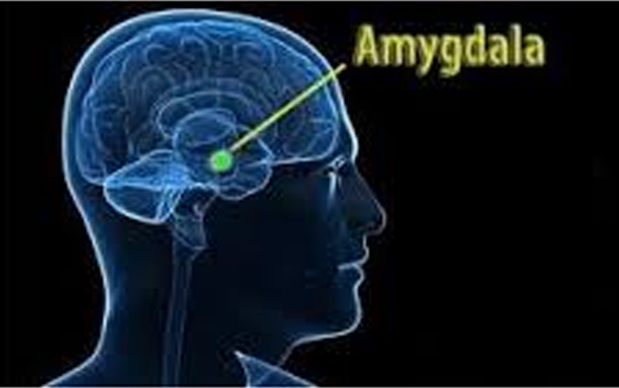Mental Health
Causes

As is the case with other mental disorders, the causes of BPD are complex and not fully agreed upon. Evidence suggests that BPD and post-traumatic stress disorder (PTSD) may be related in some way. Most researchers agree that a history of childhood trauma can be a contributing factor, but less attention has historically been paid to investigating the causal roles played by congenital brain abnormalities, genetics, neurobiological factors, and environmental factors other than trauma.
Social factors include how people interact in their early development with their family, friends, and other children. Psychological factors include the individual's personality and temperament, shaped by their environment and learned coping skills that deal with stress. These different factors together suggest that there are multiple factors that may contribute to the disorder.
Genetics

The heritability of BPD has been estimated at 40%. That is, 40 percent of the variability in liability underlying BPD in the population can be explained by genetic differences. Twin studies may overestimate the effect of genes on variability in personality disorders due to the complicating factor of a shared family environment. Nonetheless, the researchers of this study concluded that personality disorders "seem to be more strongly influenced by genetic effects than almost any axis I disorder e.g., bipolar disorder, depression, eating disorders, and more than most broad personality dimensions." Moreover, the study found that BPD was estimated to be the third most-heritable personality disorder out of the 10 personality disorders reviewed. Twin, sibling, and other family studies indicate partial heritability for impulsive aggression, but studies of serotonin-related genes have suggested only modest contributions to behavior.
Families with twins in the Netherlands were participants of an ongoing study by Trull and colleagues, in which 711 pairs of siblings and 561 parents were examined to identify the location of genetic traits that influenced the development of BPD. Research collaborators found that genetic material on chromosome nine was linked to BPD features. The researchers concluded that "genetic factors play a major role in individual differences of borderline personality disorder features." These same researchers had earlier concluded in a previous study that 42 percent of variation in BPD features was attributable to genetic influences and 58 percent was attributable to environmental influences. Genes under investigation as of 2012 include the 7-repeat polymorphism of the dopamine D4 receptor (DRD4), which has been linked to disorganized attachment, whilst the combined effect of the 7-repeat polymorphism and the 10/10 dopamine transporter (DAT) genotype has been linked to abnormalities in inhibitory control, both noted features of BPD. There is a possible connection to chromosome 5.
Brain abnormalities

A number of neuroimaging studies in BPD have reported findings of reductions in regions of the brain involved in the regulation of stress responses and emotion, affecting the hippocampus, the orbitofrontal cortex, and the amygdala, amongst other areas. A smaller number of studies have used magnetic resonance spectroscopy to explore changes in the concentrations of neurometabolites in certain brain regions of BPD patients, looking specifically at neurometabolites such as N-acetylaspartate, creatine, glutamate-related compounds, and choline-containing compounds.
Hippocampus
The hippocampus tends to be smaller in people with BPD, as it is in people with post-traumatic stress disorder (PTSD). However, in BPD, unlike PTSD, the amygdala also tends to be smaller.
Amygdala

The amygdalae are smaller and more active in people with BPD. Decreased amygdala volume has also been found in people with obsessive-compulsive disorder. One study has found unusually strong activity in the left amygdalas of people with BPD when they experience and view displays of negative emotions. Since the amygdala generates all emotions (including unpleasant ones), this unusually strong activity may explain the unusual strength and longevity of fear, sadness, anger, and shame experienced by people with BPD, as well as their heightened sensitivity to displays of these emotions in others.
Prefrontal cortex
The prefrontal cortex tends to be less active in people with BPD, especially when recalling memories of abandonment. This relative inactivity occurs in the right anterior cingulate. Given its role in regulating emotional arousal, the relative inactivity of the prefrontal cortex might explain the difficulties people with BPD experience in regulating their emotions and responses to stress.
Hypothalamic-pituitary-adrenal axis
The hypothalamic-pituitary-adrenal axis (HPA axis) regulates cortisol production, which is released in response to stress. Cortisol production tends to be elevated in people with BPD, indicating a hyperactive HPA axis in these individuals.52 This causes them to experience a greater biological stress response, which might explain their greater vulnerability to irritability. Since traumatic events can increase cortisol production and HPA axis activity, one possibility is that the prevalence of higher than average activity in the HPA axis of people with BPD may simply be a reflection of the higher than average prevalence of traumatic childhood and maturational events among people with BPD. Another possibility is that, by heightening their sensitivity to stressful events, increased cortisol production may predispose those with BPD to experience stressful childhood and maturational events as traumatic. Increased cortisol production is also associated with an increased risk of suicidal behavior.
Mood disorders
Many people with borderline personality disorder also have mood disorders, such as major depressive disorder or a bipolar disorder. Some characteristics of BPD are similar to those of mood disorders, which can complicate the diagnosis. It is especially common for people to be misdiagnosed with bipolar disorder when they have borderline personality disorder or vice versa. For someone with bipolar disorder, behavior suggestive of BPD might appear while the client is experiencing an episode of major depression or mania, only to disappear once the client's mood has stabilized. For this reason, it is ideal to wait until the client's mood has stabilized before attempting to make a diagnosis.
At face value, the affective lability of BPD and the rapid mood cycling of bipolar disorders can seem very similar. It can be difficult even for experienced clinicians, if they are unfamiliar with BPD, to differentiate between the mood swings of these two conditions. However, there are some clear differences.
At face value, the affective lability of BPD and the rapid mood cycling of bipolar disorders can seem very similar. It can be difficult even for experienced clinicians, if they are unfamiliar with BPD, to differentiate between the mood swings of these two conditions. However, there are some clear differences.
First, the mood swings of BPD and bipolar disorder tend to have different durations. In some people with bipolar disorder, episodes of depression or mania last for at least two weeks at a time, which is much longer than moods last in people with BPD. Even among those who experience bipolar disorder with more rapid mood shifts, their moods usually last for days, while the moods of people with BPD can change in minutes or hours. So while euphoria and impulsivity in someone with BPD might resemble a manic episode, the experience would be too brief to qualify as a manic episode.
Second, the moods of bipolar disorder do not respond to changes in the environment, while the moods of BPD do respond to changes in the environment. That is, a positive event would not lift the depressed mood caused by bipolar disorder, but a positive event would potentially lift the depressed mood of someone with BPD. Similarly, an undesirable event would not dampen the euphoria caused by bipolar disorder, but an undesirable event would dampen the euphoria of someone with borderline personality disorder. Third, when people with BPD experience euphoria, it is usually without the racing thoughts and decreased need for sleep that are typical of hypomania.
Comorbid Axis II disorders
Percentage of people with BPD and a lifetime comorbid Axis II diagnosis, 2008 |
|||
Axis II diagnosis |
Overall (% ) |
Male (% ) |
Female (% ) |
Any Cluster A |
50.4 |
49.5 |
51.1 |
Paranoid |
21.3 |
16.5 |
25.4 |
Schizoid |
12.4 |
11.1 |
13.5 |
Schizotypal |
36.7 |
38.9 |
34.9 |
Any Other Cluster B |
49.2 |
57.8 |
42.1 |
Antisocial |
13.7 |
19.4 |
_9.0 |
Histrionic |
10.3 |
10.3 |
10.3 |
Narcissistic |
38.9 |
47.0 |
32.2 |
Any Cluster C |
29.9 |
27.0 |
32.3 |
Avoidant |
13.4 |
10.8 |
15.6 |
Dependent |
_3.1 |
_2.6 |
_3.5 |
Obsessive-compulsive |
22.7 |
21.7 |
23.6 |
More than two-thirds of people diagnosed with BPD also meet the criteria for another Axis II personality disorder at some point in their lives. The second most common is another Cluster B disorder, which includes antisocial, histrionic, and narcissistic. The least common are Cluster C disorders, which include avoidant, dependent, and obsessive-compulsive, and have a prevalence of 29.9 percent in people with BPD.
Management
Psychotherapy is the primary treatment for borderline personality disorder. Treatments should be based on the needs of the individual, rather than upon the general diagnosis of BPD. Medications are useful for treating comorbid disorders, such as depression and anxiety. Short-term hospitalization has not been found to be more effective than community care for improving outcomes or long-term prevention of suicidal behavior in those with BPD.